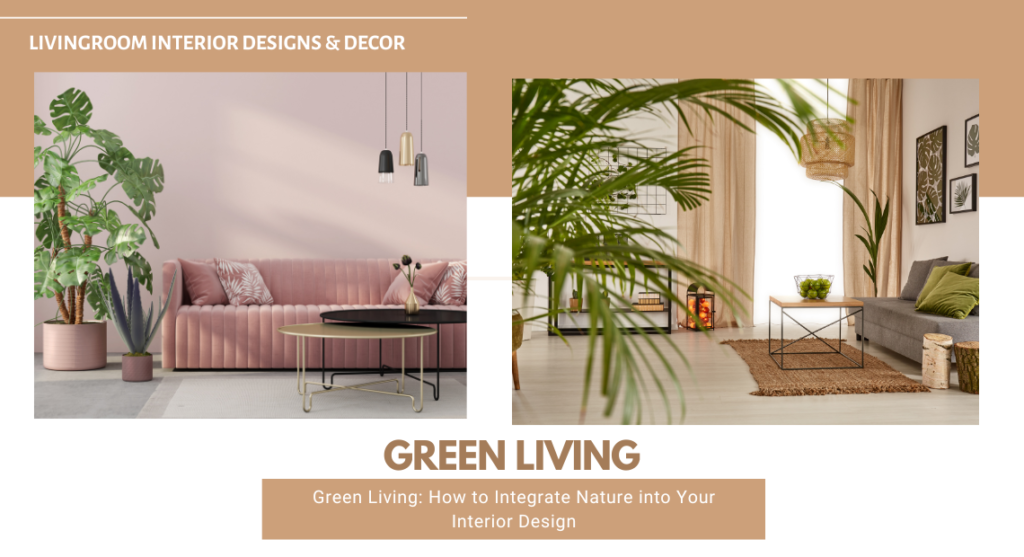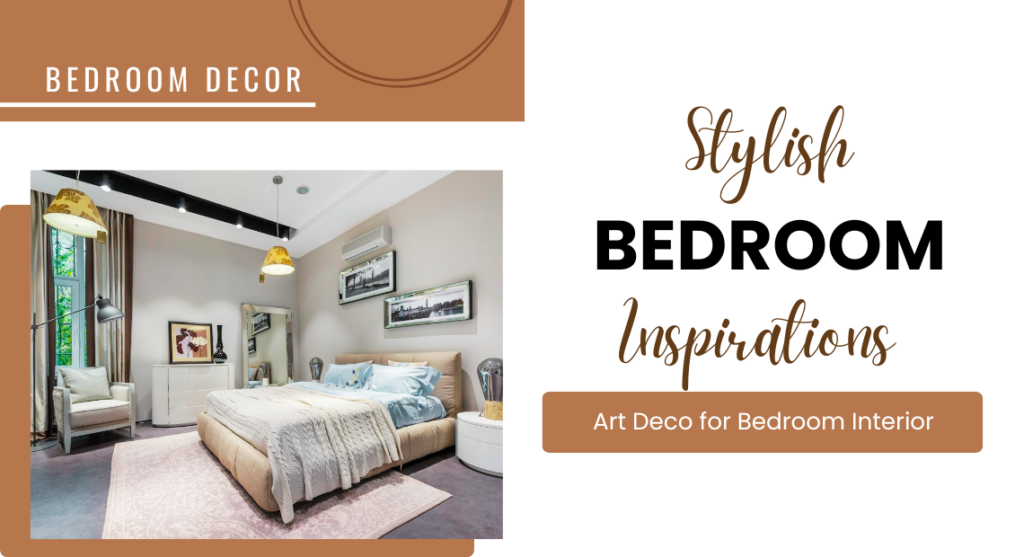As the world becomes more environmentally conscious, the concept of green living has taken center stage in interior design. Integrating nature into your living spaces not only enhances the aesthetic appeal of your home but also promotes well-being and sustainability. By bringing the outdoors in, you can create a serene and refreshing atmosphere that fosters a deeper connection with the natural world. Here’s how to effectively integrate nature into your interior design.
1. Embrace Natural Materials
Using natural materials is fundamental to creating a nature-inspired interior. These materials not only offer aesthetic appeal but also contribute to a healthier living environment.
Implementation:
- Wood: Opt for furniture and decor made from sustainably sourced or reclaimed wood. Exposed beams, hardwood floors, and wooden accents add warmth and character to any space.
- Stone: Incorporate natural stone elements, such as granite countertops, slate tiles, or stone feature walls. These materials evoke a sense of permanence and grounding.
- Bamboo: Consider bamboo flooring, furniture, or decor. Bamboo is a fast-growing, renewable resource that adds a touch of elegance while being eco-friendly.
2. Bring in Indoor Plants
Indoor plants are a fantastic way to infuse life and color into your home. They also improve air quality and create a calming atmosphere.
Implementation:
- Low-Maintenance Options: If you’re new to plant care, start with low-maintenance plants like snake plants, pothos, or succulents. These plants thrive in various conditions and require minimal attention.
- Vertical Gardens: Consider creating a vertical garden or a living wall. This not only saves space but also serves as a stunning visual centerpiece in your home.
- Planters and Pots: Choose decorative planters that complement your interior style. Materials like terracotta, ceramic, or metal can add texture and interest.
3. Maximize Natural Light
Natural light plays a crucial role in connecting indoor spaces with the outdoors. Maximizing light can enhance mood and energy levels.
Implementation:
- Window Treatments: Use sheer curtains or blinds that allow sunlight to filter in while maintaining privacy. This creates a bright and airy environment.
- Mirrors: Strategically place mirrors to reflect natural light around the room. This not only amplifies light but also makes spaces feel larger.
- Skylights and Large Windows: If possible, consider adding skylights or large windows to your home. These features can drastically increase natural light and provide stunning views of the outdoors.
4. Choose Earthy Color Palettes
Colors found in nature can create a calming and harmonious atmosphere in your home.
Implementation:
- Earth Tones: Incorporate earthy hues such as greens, browns, and soft neutrals. These colors evoke the tranquility of nature and create a grounded feel.
- Accent Colors: Use brighter colors found in nature, like vibrant floral hues or ocean blues, as accents in your decor. This can add visual interest without overwhelming the space.
- Natural Textures: Combine colors with natural textures, such as woven textiles, stone finishes, or wooden elements, to enhance the organic feel of your interior.
5. Use Nature-Inspired Decor
Nature-inspired decor can help bridge the gap between the indoors and outdoors, creating a cohesive theme.
Implementation:
- Art and Prints: Choose artwork that features natural landscapes, botanical prints, or wildlife. This can serve as a focal point while celebrating the beauty of nature.
- Natural Patterns: Incorporate fabrics and wallpapers with nature-inspired patterns, such as floral designs, leafy motifs, or animal prints. These can add depth and character to your space.
- Sustainable Decor: Look for decor items made from recycled or sustainable materials. Items like reclaimed wood shelves or eco-friendly ceramics can enhance your green living aesthetic.
6. Create Outdoor Living Spaces
Blending indoor and outdoor spaces creates a seamless flow, allowing you to enjoy nature right at home.
Implementation:
- Patios and Decks: Design outdoor living areas that include comfortable seating, dining options, and natural landscaping. Use materials that complement your interior style.
- Garden Rooms: Consider adding a garden room or sunroom that allows you to enjoy the outdoors while being sheltered. These spaces can serve as relaxing retreats.
- Biophilic Design: Integrate biophilic design principles by incorporating natural elements, such as water features, rock gardens, or plant walls, into your outdoor spaces.
7. Prioritize Eco-Friendly Practices
Sustainable living practices enhance your commitment to green living while benefiting the environment.
Implementation:
- Energy Efficiency: Invest in energy-efficient appliances, lighting, and insulation. This reduces your carbon footprint and lowers utility bills.
- Sustainable Sourcing: Choose furniture and decor from brands that prioritize sustainable materials and ethical manufacturing practices.
- Water Conservation: Implement water-saving fixtures and systems in your home, such as low-flow faucets and drought-resistant landscaping.
8. Incorporate Natural Sounds and Scents
Incorporating natural sounds and scents can enhance your living environment and foster a deeper connection with nature.
Implementation:
- Soundscapes: Use sound machines or speakers to play nature sounds, such as birds chirping or ocean waves, creating a calming ambiance in your home.
- Essential Oils: Use essential oil diffusers with scents inspired by nature, such as lavender, cedarwood, or eucalyptus, to promote relaxation and well-being.
- Indoor Water Features: Consider adding a small indoor water fountain. The gentle sound of flowing water can create a serene atmosphere reminiscent of nature.
9. Personalize Your Space
Personal touches can make your nature-inspired interior truly unique and reflective of your style.
Implementation:
- Travel Mementos: Incorporate items collected from nature during your travels, such as seashells, stones, or driftwood, as decor accents.
- Family Heirlooms: Use family heirlooms or handmade items that connect you to your heritage and add character to your space.
- Artistic Expression: Create your own art pieces inspired by nature, whether through painting, photography, or crafting. This personal touch enhances the authenticity of your design.
10. Maintain a Connection with Nature
Keeping a connection with nature in your home fosters a sense of peace and well-being.
Implementation:
- Seasonal Changes: Change your decor with the seasons to reflect the natural world outside. This could include seasonal flowers, plants, or decor that aligns with nature’s cycles.
- Outdoor Activities: Design spaces that encourage outdoor activities, such as reading nooks by windows with views of gardens or patio spaces for dining and relaxation.
Mindfulness Practices: Incorporate mindfulness practices, such as meditation or yoga, in spaces designed with natural elements. This can enhance your connection with nature and promote mental well-being
Integrating nature into your interior design is a powerful way to create a harmonious and rejuvenating living environment. By embracing natural materials, maximizing light, using earthy color palettes, and incorporating plants and nature-inspired decor, you can foster a sense of tranquility and well-being in your home. Green living is not just a trend; it’s a lifestyle choice that celebrates the beauty of the natural world while promoting sustainability. Embrace these principles to create a space that is both beautiful and nurturing—a true sanctuary that reflects your commitment to nature.


